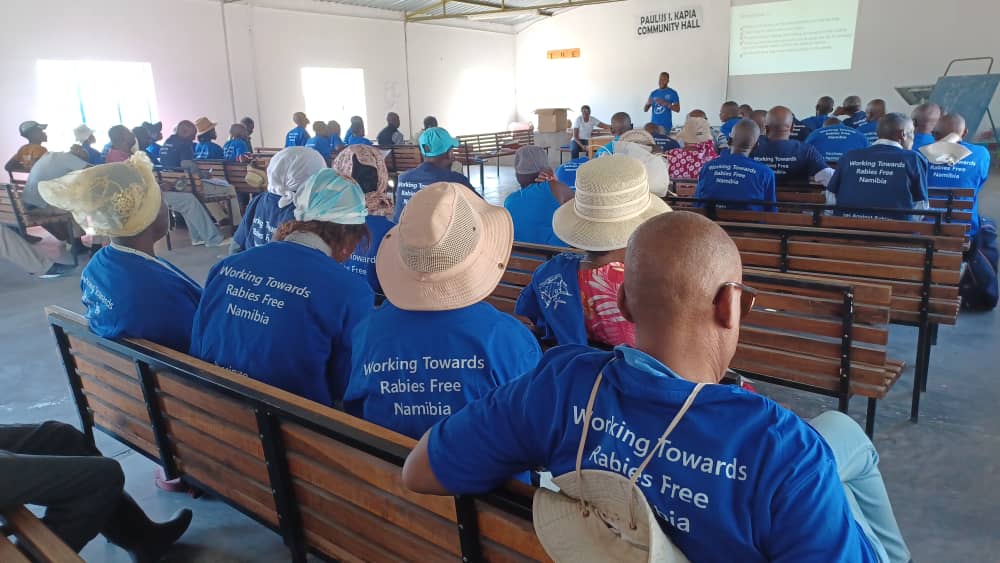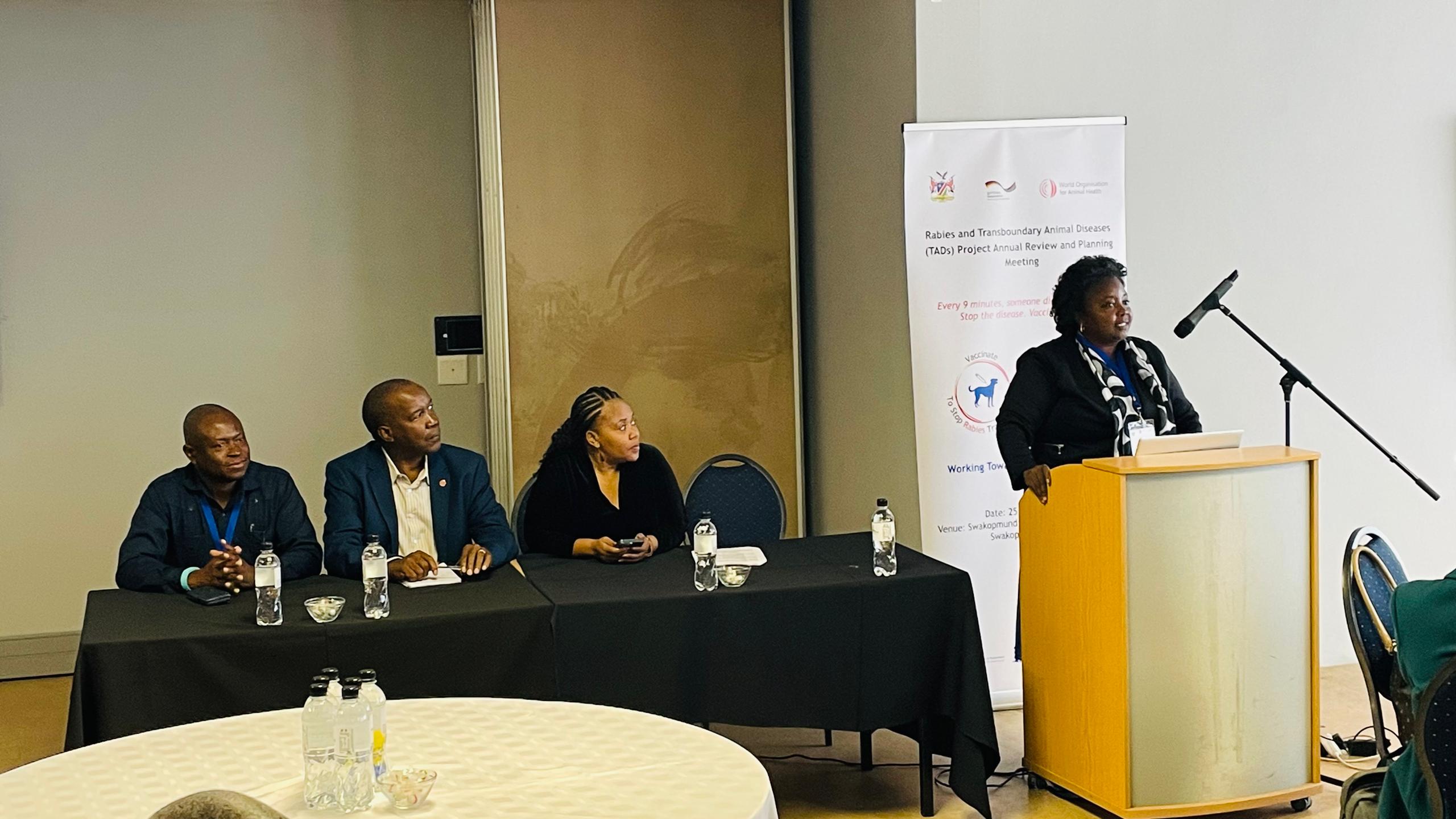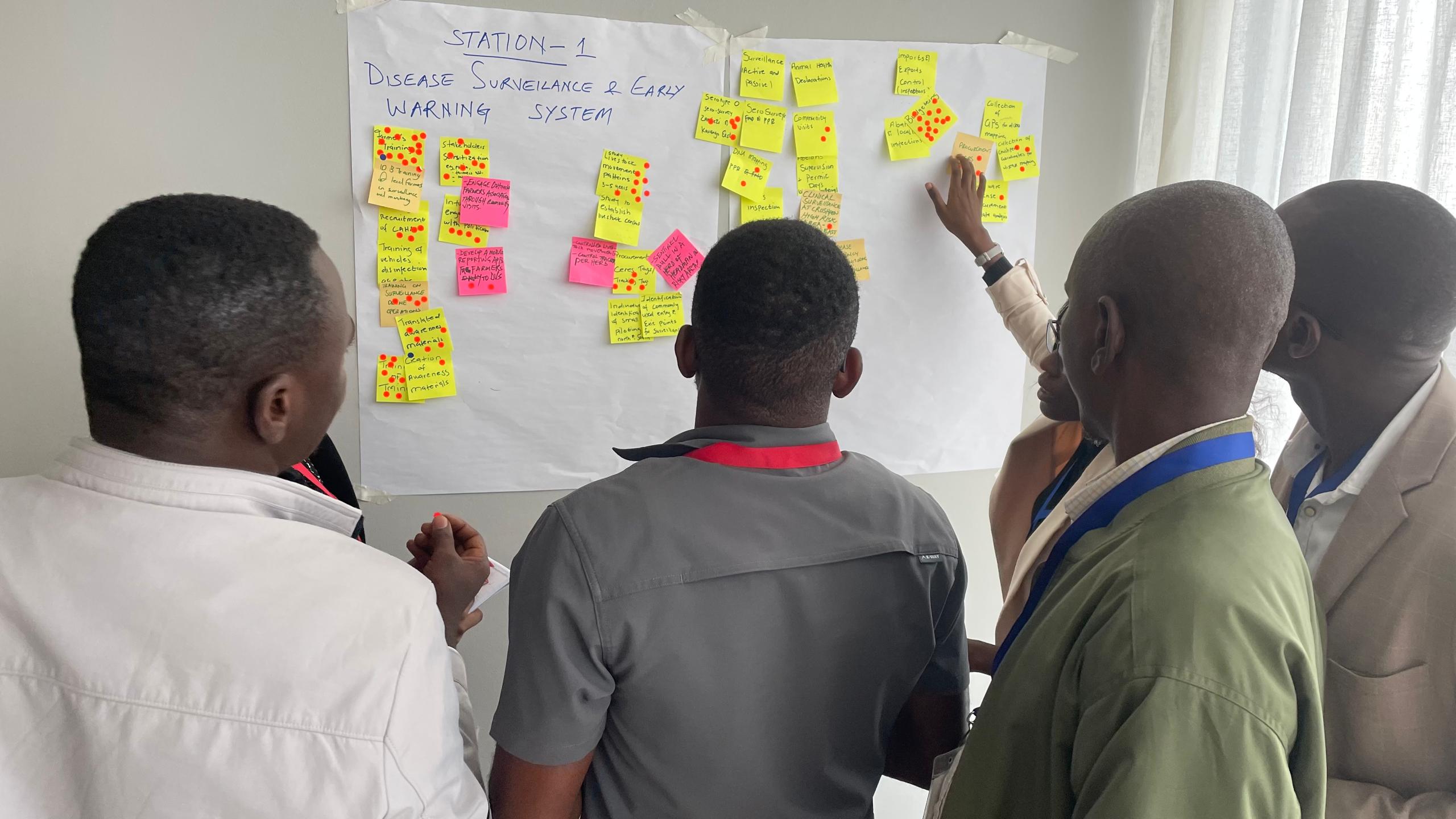
The Federal Ministry for Economic Cooperation and Development (BMZ) has funded the “One Health approach towards control of rabies and transboundary animal diseases (OHRT)” project to support the Namibian Directorate for Veterinary Services in the implementation of its national elimination of dog-mediated human rabies programme, formally endorsed by WOAH’s World Assembly of Delegates in May 2021. This Project also aims at strengthening animal health systems in the Northern Communal Area (NCA), in particular through supporting Foot-and-mouth disease (FMD) and Peste des petits ruminants (PPR) surveillance and movement control in the NCA of Namibia. Several activities were implemented successfully and also encountered some challenges and issues during the course of programme implementation.
A consultative stakeholder meeting was conducted to review the project activities implemented so far and prepare action plan for 2025 and beyond the project period. The TADs meeting on 25 March 2025 was attended by 41 participants from the Directorate of Veterinary Services (DVS) of Namibia (34), Ministry of Environment-Wildlife (1), Institute of Veterinary Servies of Angola (3) and WOAH (3), while the Rabies meeting was attended by 68 participants from DVS (34), Ministry of Environment-Wildlife (1), Ministry of Health and Social Services Namibia (19), Institute of Veterinary Services of Angola (3), the Cheetah Conservation Program (1), the Veterinary Association of Namibia (1), Have a Heart Namibia (3), Friedrich-Loeffler-Institut (3), and WOAH (3).
The meeting started with an opening remark by the representatives from DVS Namibia, Ministry of Health and Social Services, the Institute of Veterinary Services of Angola (ISV), the Friedrich-Loeffler-Institut (FLI) and WOAH. The Namibian representative thanked the Republic of Germany for providing financial support and to other partners for technical support. Dr. Moetapele Letshwenyo, the WOAH Sub-Regional Representative for Southern Africa, stated that rabies project has been implemented for the past 10 years, and the Namibia Rabies Project has reached a milestone by achieving a reduction in rabies cases both in animals and in humans.
Opening session of the rabies meeting (L-R) Dr Samo Daniel, ISV Angola, Dr Moetapele Letshwenyo, WOAH, Ms Iyaloo Mwaningange, Ministry of Health & Social Service, Namibia, Dr Rauna Athingo, Directorate of Veterinary Services, Namibia. Photo (c) T. Tenzin (WOAH) 2025.
This success is attributed to improved collaboration between animal and public health sectors using the ‘One Health’ approach, as well as technical support from partners such as WOAH, the Friedrich-Loeffler-Institut and other partners. He emphasised that the project would end by December 2026, and the DVS should continue the momentum to sustain the rabies elimination activities.
The first day of the meeting was dedicated to the Foot-and-mouth disease (FMD) and Peste des petits ruminants (PPR) prevention and control programmes in the NCA. Presentations on global updates on FMD and PPR, TADs project implementation updates in the NCA, animal movements and traceability system, and updates from Angola were made at the meeting.
World Cafe Session. Photo (c) T. Tenzin (WOAH) 2025.
A World Café session was conducted focusing on
The group came up with several ideas that were then prioritised for implementation. Key activities include capacity building on disease surveillance and laboratory diagnostics, post-vaccination sero-monitoring against FMD, serotype O surveys in cattle, cattle and small stock movement studies to inform disease prevention and control, and Namibia’s readiness for submitting a dossier for PPR freedom in the NCA.
The second and third day of the meeting were dedicated to the rabies control programme in the NCA, Namibia. The key highlights were:
A World Café session was organised on the following themes:
Key activities were prioritised for implementation during 2025 and beyond the project period.
The meeting adopted the work plan for 2025, focusing mainly on mass dog vaccination campaigns, rabies surveillance, awareness and education, capacity building and data management and analysis. Since the current rabies control plan endorsed by WOAH expires in December 2026, Namibia will develop an action plan for the next 5 years, 2026-2030. The DVS management is committed to the sustainability of the rabies elimination activities and assured that they have resources and capacity to continue the rabies control activities after the project.
The meeting ended with closing remarks by DVS, MHSS, FLI, ISV-Angola and WOAH representative with a clear message to continue working towards elimination of a dog-mediated rabies through ‘One Health’ collaboration.


